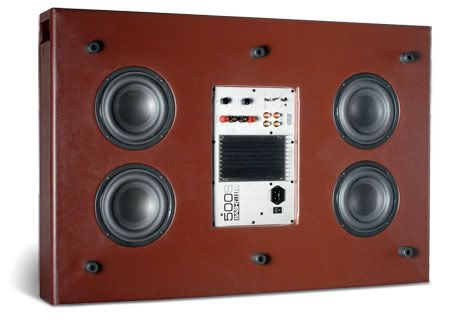Quote:
Originally Posted by trains are bad
I will preface my post by saying that I know almost nothing about home audio, but I know an awful lot about car audio.
I have energy C-3 bookshelf speakers and a Pioneer Elite A35R amp. In my new apartment, I'm astounded at how well they sound. The room makes a big difference indeed.
|
You've already got a great setup going there. Both of those are great pieces of gear.
Quote:
| Anyway, they don't have good bass extension, being bookshelf speakers and all. Does anyone know of any plans for DIY subwoofers? I only want a small one, I'm not looking for volume, merely extension. The first issue is whether it's possible to integrate a subwoofer with the bookshelf speakers at all and get good results. Most of the music speakers I see seem to be full range speakers. Is a separate subwoofer a home theater construct and not suitable for music? |
You won't find as many complete plans for DIY subwoofers as for other types of home speakers, but that's not because people don't build them. It's because subwoofers are relatively easy to model with software, so you don't really need plans. Just download WinISD (or Unibox if you want to get very detailed info), input your driver specs, choose whether you want sealed, ported, or something more exotic, and it will calculate optimum box sizes and port lengths for you, which you can then adjust. (Stick with the old version of WinISD rather than the Pro version, because the latter can be a pain for entering driver information.)
Most of the plans online are for quirkier unconventional subs, like this one, meant to be small:
http://www.rjbaudio.com/Cerberus/cerberus.html
or this one, meant to slide under a sofa:
http://www.partsexpress.com/projects...man/index.html
But here are two good conventional designs:
http://www.partsexpress.com/projects...ake/index.html
and
http://zaphaudio.com/archives-20.zip
You could come up with those designs yourself just by using modeling software.
In response to your sound quality question, it is definitely possible to build a system with good sub/sat integration. A sub combined with bookshelf mains is in many ways a better compromise than a medium-sized floorstander. Just as a practical matter, you'll probably find that it's easier to get good integration with a sub by stuffing the ports in your bookshelves and crossing a little bit higher. This is because the phase angle spins around so dramatically at a loudspeaker port's tuning frequency.
Note that for music, the "chest thumping bass" actually comes from strong output in the 60-85 Hz range. The 20-35 Hz range mostly just shakes stuff and is unnecessary for music for the most part (except pipe organs). With a good low distortion sub, you'll be surprised by just how little audible sound is generated in that region. (With a lot of commercial subs, what you're hearing when you play a 25 Hz tone is just second or third harmonic distortion products, which are louder than the fundamental.) So ultimately your goal for music only needs to be decent extension down to about 30 Hz, perhaps with a bit of a bump around 75 Hz.
Quote:
| What I could do is buy a subwoofer driver from parts express, build my own MDF box, and figure out some way to amp it. When I was into car audio we just did sealed boxes, but I know home audio generally goes ported, which I can't do unless I have plans. In home audio you also have the crossover built into the speaker and run a full range signal to it. |
Yup, basically all you need to do is buy a driver from PE and build a box. Take a look at Zaph's project I linked to above (the zip file). That's a good, solid design using a good value PE driver.
Most home subs are ported because people want dual use for home theatre, and thus require extension to 20-25 Hz. However, if sound quality specifically for music is your goal, a sealed box is still the best choice for home use, because it's the fastest sounding design (lowest group delay). The tradeoffs are decreased extension and the requirement of needing a larger woofer. You won't be satisfied by anything smaller than 12 inches if you go sealed. Many sub plate amps (e.g. some of the ones at PE) have a bit of a low end boost designed to match nicely with sealed boxes, giving them a little more low end oomph. If you do go ported, watch the group delay in WinISD and don't get too crazy. You can make most drivers go very low by pushing up the group delay, but then you get that slow tubby bass sound you hear from Radio Shack subwoofers.
Quote:
| Of course if there are inexpensive commercial subwoofers available I would just buy one of them, but I haven't seen any that didn't seem awfully expensive, considering what you can buy parts for. |
If your goal is saving money or bang for the buck, just get the low end AV123 X-series sub, designed by Danny Richie. For $199 you can't come close by buying the parts separately, even if you just leave the box as unfinished MDF, rather than finished real wood veneer. If you want a truly good sub for a decently low price, consider picking up the Dayton RSS315HF from PE along with one of their mid-range plate amps with bass boost for sealed boxes, then build a sealed MDF or baltic birch ply box and you're good to go. This will compete with any of the best commercial music subs out there, at any price.





